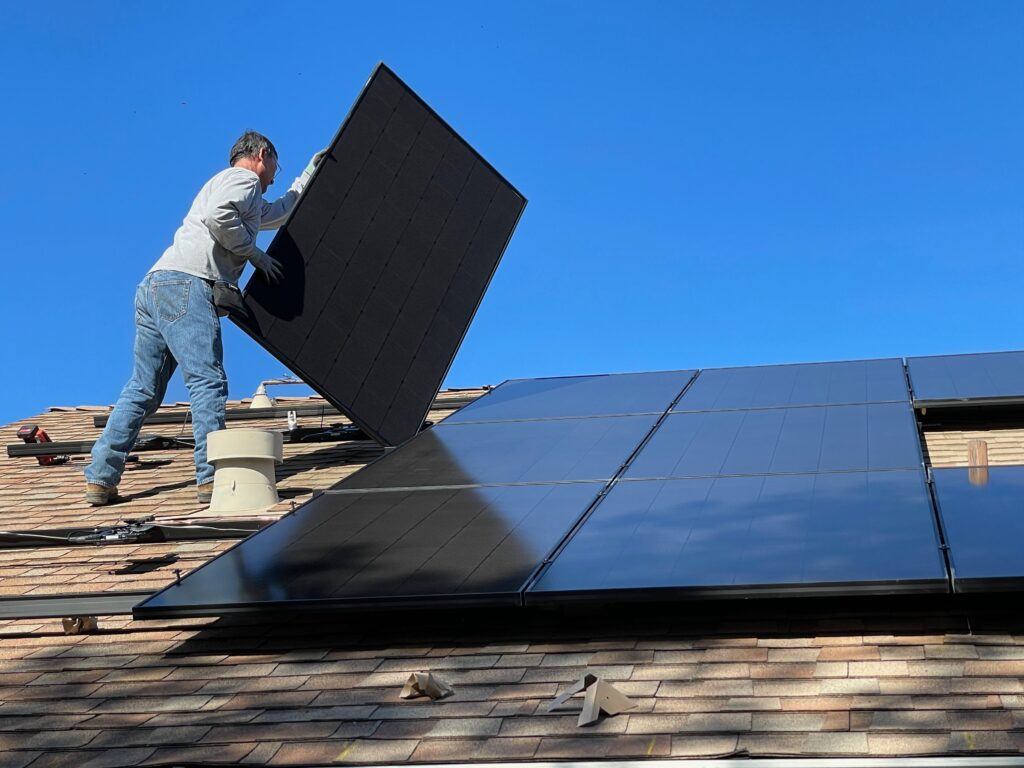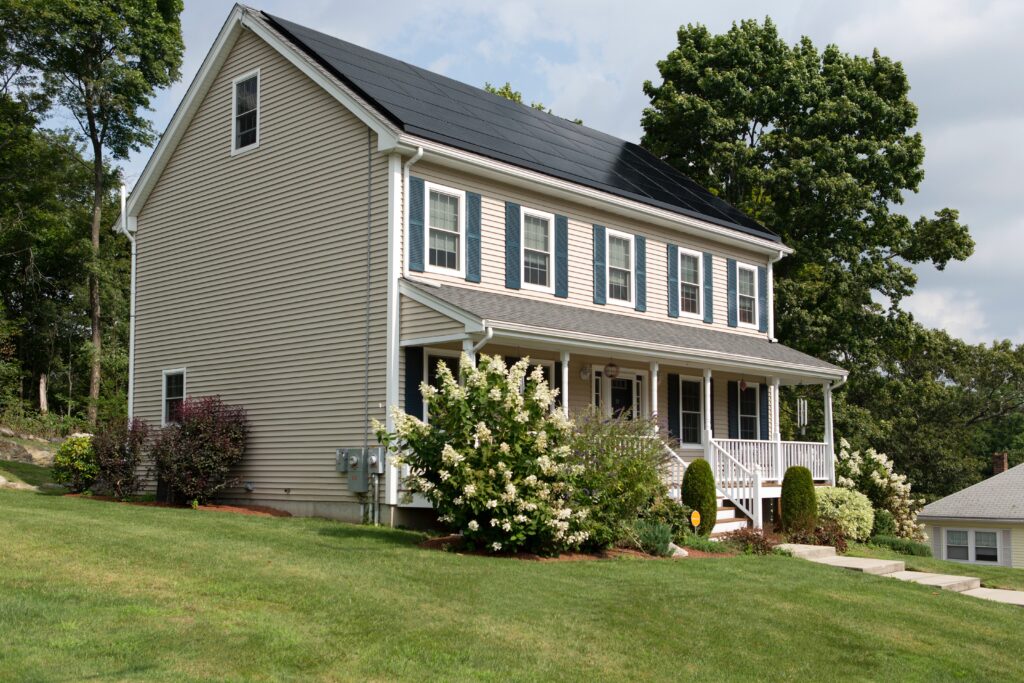residential solar
At-Home Solar
At-home solar, is a technology that offers a lot of promise to help save money on your energy bill and be greener. The cost of photovoltaic (PV) panels has dropped dramatically in the past few years, but this price reduction doesn’t mean residential at-home solar makes sense for everyone.
At-Home solar
Frequently Asked Questions
No. Tipmont does not offer at-home solar installations. Instead, our Community Solar program offers green energy for your home while avoiding expensive upfront installation and ongoing maintenance costs.
However, solar panels may still be a good fit for your home. If you choose to proceed with installing at-home solar on your home, please read the following information.
The answer depends on your situation. Based on historical trends, we can say with confidence that energy costs will continue to rise. Installing at-home solar will cost you significant money upfront. However, the system will likely pay for itself over time as energy costs continue to rise and the energy generated by your system is free. You will need to calculate how long it will take the system to pay for itself.
Installing at-home solar may have other impacts beyond energy savings.
- It is considered a major renovation to your home. If your home is an older building, your roof may need repairs or even an entire roof replacement before solar panels can be installed. It’s a good idea to have a professional contractor inspect your home before making any major modifications.
- You may be responsible for ongoing maintenance costs. Make sure you understand any contract you sign prior to moving forward.
- Not all panels and inverters are alike. Do your homework to understand the different types. The quality of the energy you generate has more to do with the inverter than the panels themselves. Get quotes from several vendors to fully understand your financial cost.
- Your homeowner’s association (HOA) may have restrictions on structure renovations. Contact a HOA representative before moving forward with an installation.
- You’ll want to ask your insurance company how this renovation to your home will affect your homeowner’s insurance.
Any member-owned generation will affect the larger grid. For Tipmont and other electric companies to safely and reliably manage the power flow on the electric grid, we need to be aware of any source that is generating energy.
There are several reasons we need to be aware of member-owned generation:
Power flow management: If your solar panels produce more energy during the day than you consume in your home, those electrons have to go somewhere. The only place they can go is back onto the electric grid. To safely manage power flow, we need to be aware of all sources generating energy.
Reliability: Solar arrays do not generate energy when the sun is not shining. Electric providers need to make sure we have the generation available to backfill your needs if your systems stop working.
Safety: If your system is not functioning correctly, it could unintentionally back feed power onto the grid. This is a serious safety hazard for our linemen who could find themselves working on a line they believe has been disconnected but is still receiving power from another source.
Steps you need to take when getting started
Solar Array Under 25 kW
At-Home Solar
Steps You Need To Take
If your array is under 25 kW, please follow the listed steps. If your array is above 25KW, there may be additional engineering required to ensure our electrical infrastructure can accommodate your array. Please click “Over 25 kW” above to learn more.
Work with your solar vendor to complete and sign the Application for Small Member-Owned Generation.
- A signed Application for Small Member-Owned Generation.
- Proof of personal liability insurance in the amount of $1M for each occurrence. This is to protect our linemen and metering technicians in the event of a power outage involving your solar array.
- A detailed work plan that includes solar array location, specifications, and a wiring diagram.PLEASE NOTE: Tipmont REMC does not accept wiring diagrams that include a line-side tap, or any wiring that requires working inside our meter base
A Tipmont representative will sign and return the agreement to you, typically within five business days.
Install your solar panels
- If the solar array will operate in Tippecanoe or Montgomery County, please contact your county’s commissioner’s office to complete the inspection.
- If the solar array will operate in Fountain County, please have a licensed electrician submit the inspection to Tipmont REMC.
Once Tipmont has confirmation of a completed inspection, we will contact you and your vendor to schedule a meter exchange. There is no service or trip charge for this inspection. Although not required, we encourage members to be present during the meter exchange to address any questions that may arise while the array is being activated. It is required that your vendor be present during the meter exchange.
Solar Array Over 25 kW
If your array is above 25KW, please complete the form below prior to starting construction on your array. There may be additional engineering required to ensure our electrical infrastructure can accommodate your array.
how much energy is generated
Tracking Your Generation
After your new meter is installed, your SmartHub account will show the kilowatt hours you passed back to the grid.
Example: if you generate 100 kwH and use 30 kWh, your account will show 70 kWh generated.

At-Home Solar
Additional Info
Here are some links to more information about Solar:
- Solar System Performance
- Local Installer Reviews
- NABCEP Certified Solar Installers
- Renewables and Energy Efficiency Incentive Database
